|
Restoring Truth and Human Value to the Advertising Industry https://ift.tt/2At1Y7r In waves of change and tribulation, the lessons always follow. It is in these storms where we may find what matters most, leading ourselves to shore with strong values as our sail and a distinct sense of self to keep us afloat. This is the human condition. As an industry that serves people, their wants and their needs, advertising is a profoundly human field. It is unfortunate, then to think that its success is now measured by impressions and data points, that monetary gains are awarded by shady business practices, and that stories are told through impersonal messages, creeping ahead of us at every corner. It is essential that we remember whom we are trying to reach-real people, and who we are at the core; real people riding the waves just like anybody else. While on a subtle level, the advertising we are immersed in each day informs the way we view society and our inner being. Advertising compels the way we think, what we consume, and how we develop and act on our morals and values. With such a public presence, advertising affects everyone, for better or for worse. This tool can not only be used to increase benefits for brands and agencies, but for society at large, if we take the initiative to develop clear values that create unity, acceptance, and truth in our world. Human values can also help to serve the longevity and identity of a brand. To become a strong brand or agency that survives the test of time, you must have a clear sense of value through and through. Not only does this drive greater purpose in everything that you do, but it can also help you to stay relevant, knowing what makes you different and important in the ever-changing space. Acceptance is a profound value and an agent for change in the advertising field. In a commercial, Cheerios chose to promote its heart-healthy cereal with the image of a biracial family. Despite some hateful backlash, the ad helped shift perspectives about the ‘typical’ American family, thus advancing advertising norms, and resulting in a 77% increase in brand exposure, the weeks following its launch. This goes to show the double-sided impact of advertising on a human level and the ways other businesses can begin to be ‘heart-healthy’ in their own messaging. Values-based advertising is another approach that seeks to leverage the emotions of the public to create a long-lasting impression. By tapping into the deeply rooted values of consumers, advertisers can reach them on a deeper level and more effectively capture their attention in the first place. Values-based advertising strengthens brand loyalty as well as human connection. For media agency, Exverus human value is at their very core. Literally meaning, “about the truth”, Exverus is restoring truth and transparency back to the media space. In a public landscape where tech companies like Facebook become giant media companies and betray the trust of its users, transparency is a hot topic, and for good reason. Truth has been kind of a lost cause as of the last 15 years and while the rest of the advertising world chases shady accounting practices and thousands of data charts, Exverus reaches engagement on a human level. Beginning as a freelance assignment, Exverus grew into something much bigger with the support of previous clients and referrals. Now, Everus is standing on its own two feet and it’s playing the balancing act quite well. Combining hard facts with emotion, short-term sales goals with long-term brand equity, the agency works to be as well rounded as a real person. While responsive to fluctuations in trends and changes in the industry, its driving principals are always at the heart of its identity. As an agency that lives and breaths truth, its success is an inspiration for agency workers to regain the trust of marketers and consumers. The agency provides an ideal vision for the future of authentic, values-based advertising, for agency models and for consumers at large. In order to fulfill this vision, we must all look within to understand what makes us different and look around us to understand what makes us all the same. For President and Founder of Exverus Media, William (Bill) Durrant, these lessons are essential. He states, “I have never and will never stop learning. I have found practical applications for my business from books as wide-ranging as Start With Why by Simon Sinek to Rich Dad Poor Dad by Robert Kiyosaki. There is a lesson to be learned everywhere if you know how to look for it.” The post Restoring Truth and Human Value to the Advertising Industry appeared first on Social Media Explorer. Social Media via Social Media Explorer https://ift.tt/2onGYog July 31, 2018 at 02:18PM
0 Comments
https://ift.tt/2LMPHiK
The U.S. Consumer Product Safety Commission has the most unexpectedly hilarious Twitter https://ift.tt/2NYLnu7  This is Ode To..., a weekly column where we share the stuff we're really into in hopes that you'll be really into it, too. The U.S. Consumer Product Safety Commission is here to warn us about unsafe products and best practices when using certain products. And, it seems, to also keep us entertained with some of the weirdest meme-filled tweets of any government agency. Most recently the account has received attention in the past for its unusual approach to education and recently got the attention of unfamiliar users with a single-word tweet.
Are horses being recalled? Was the account hacked? What is happening? Scrolling through previous tweets revealed the past amazingly ridiculous posts that combined elements that were surreal and absurd with, well, legit safety tips. These are all great points! It's summer and sunny so yes, beware of hot playground equipment! And ATVs can be dangerous, especially without a helmet. And these examples don't include some glorious 4th of July safety-related tweets. As it turns out, that's the whole point, according to Joseph Galbo, the man behind the USCPSC's social media strategy: to do something different than most other government agencies who take a more straight-forward approach to education. "We know people like to have fun, we know people like to learn new things. So it really was just a matter of putting those two concepts together," Galbo told me on the phone. Galbo has a solid background for combining those two concepts into meme magic, having previously worked for the Liberty Science Center in New Jersey. "While I was there, I saw how they used fun to teach kids and when I got here, I was like, wow, we can do something similar with safety." "When you're a little bit different and when you're a little bit entertaining, I think people will reward you with their likes and their retweets," he adds. It's a collaborative effort, too. The communications office is small, less than 10 people, according to Galbo, and he focuses on social media. "The other public affairs specialists will have their safety campaigns that they have to promote and they'll come to me and we'll brainstorm on what the graphic should look like, what's a good angle to approach it from," he explains. "A lot of them do end up being surrealists which is my sense of humor most times. And people really like it." Indeed, Galbo says the USCPSC Twitter account had somewhere in the neighborhood of 28,000 followers when he joined the team in 2016 but has grown to nearly 46,000 followers. And most of the feedback has been good. "The positive responses we see vastly outweigh the negative responses," Galbo says. "We'll always get the occasional, 'I can't believe my tax dollars go into this' or something along those lines. But that's a very, very small minority compared to the average user." And the approach is helping the agency reach a younger audience. "We're reaching younger parents and, in some cases, kids in college and high school," he adds. "That's really exciting, especially for a small agency that discusses such a niche safety piece of the national conversation. It's really, really great to see people getting engaged." The reaction from other government agencies has also been positive, according to Galbo. "Counterparts at other agencies have reached out to say, 'Hey, it's great,' or 'Hey, how are you getting that approved?'" And he takes inspiration from other, larger agencies "when it's time to get serious and discuss harder topics." The strategy is also a matter of trying to do more with less. The CPSC has a budget of about $123 million, according to Galbo, and communications gets just a small bit of that."Around $2 million to $3 million, maybe" with a large chunk of that going into printed materials and other efforts "to reach communities where access to technology is a challenge." "The money flows to the places that need it the most," he says, "and on social media, with this strategy, being a little different, being a little funny sometimes, it's working out." As for that horses tweet, it's not the first time horses have been used on the agency's account and, yes, it had a payoff. Galbo was kind enough to confirm one important question, laughing as he explained, "We do not regulate horses. I can confirm that we do not regulate actual living and breathing horses. That is a different government agency." Stay beautiful, you wonderful, weird Twitter feed. WATCH: Controllable Computer for Kids Gains Traction on KickstarterSocial Media via Social Media https://ift.tt/2DCFv97 July 31, 2018 at 01:01PM
https://ift.tt/2OuvRHy
How to Evaluate and Partner With Social Media Influencers https://ift.tt/2NYOfar
Wondering which influencers are a good fit for your business? In this article, you’ll find out how to get started with influencer marketing campaigns. 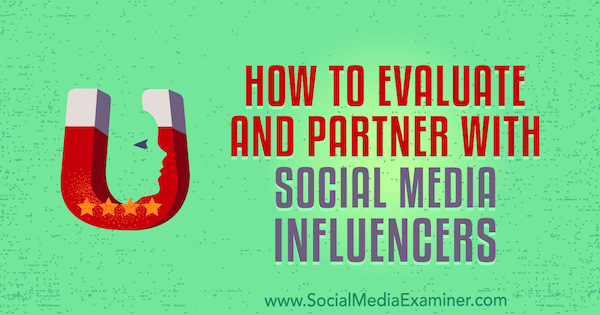
How to Evaluate and Partner With Social Media Influencers by Lilach Bullock on Social Media Examiner.
#1: Identify Potential Social Media InfluencersFirst, it’s helpful to understand what types of influencers you’ll encounter. While there’s no established guideline for categorizing them, one common way to refer to them is by the size of their social media following:
You can also categorize influencers by type, including:
Now that you’re familiar with different kinds of social media influencers, let’s look at three ways to find influencers to work with. Do a Manual Search If you’re active on social media, chances are you already know some influencers in your niche. Open up a new Google sheet and add the following columns:
Then write down all of the potential influencer names you can think of. Also, add details about the size of their following and main channel of influence. To find out the domain authority for an influencer’s website, you can use the free MozBar browser extension from Moz. The bigger the DA score, the better. You want to focus on influencers who have DA of at least 30-35.
You can also research top blogs in your niche to find influencers. Simply do a Google search for “niche keyword + blog” and you’re sure to find lists made by others with the best and most popular blogs. Then use the MozBar to find out the DA for their blogs and add the best ones to your spreadsheet. Use Influencer Marketing Tools The easiest and quickest way to find lots of potential social media influencers is to use influencer marketing tools. Many of the tools also let you research the influencer at the same time. Generally, influencer marketing tools will at least give you a snapshot of their social presence, such as:
Some tools take things a step further and allow you to connect with the influencer directly. You can also use influencer outreach tools, which allow you to reach out to influencers and manage your influencer campaigns. The influencer marketing platform Social Bond lets you manage the entire process. The tool offers a free plan and paid plans start at $9/month. Search for social media influencers and see ratings based on followers, engagement, and influence.
The tool lets you filter results based on the influencers’ followers and their own demographics (such as their location, niche, or brand affinity). You can also research influencers’ audiences in detail to determine if they’re a good fit. Other useful influencer marketing tools include:
Employ Social Listening and Monitoring Tools A third way to find social media influencers is to leverage monitoring and social listening tools. With these tools, you can monitor relevant keywords from your niche to see the top sharers in that niche and find out whom your audience is engaging with. There are several ways you can do this. First, you can use your social media management tool to monitor keywords. Most of these tools, such as Agorapulse (free 14-day trial, then starting at $49/month), Hootsuite (limited free plan available), or Sprout Social (free 30-day trial, then starts at $99/month), offer this feature. Start a few different monitoring searches with keywords related to your niche and check your results regularly.
If you discover a popular widely shared blog post, a user regularly getting a lot of engagement, or an account that gets a lot of shares from your target audience, write down their names/social handles in your spreadsheet. An easier route is to use pro social listening tools that help you identify top influencers automatically. Paid tools like Brandwatch (contact for a demo) and Brand24 (free 14-day trial, then starting at $49/month) allow you to create in-depth searches across the web (not just social media) and will automatically find the top authors and sharers based on your keywords.
#2: Evaluate Potential Social Media Influencers for FitNow that you’ve put together a list of potential influencers to work with, the next step is to thoroughly research them and their online presence. You want to know if they’re reaching the right audience, with the right content, and that they’re actually influential. The two main areas you want to look at are relevance and quality of influence. Assess Relevancy It’s important to check the relevancy of the influencers you want to work with. If you don’t choose the right influencer, your message won’t be heard by the right audience. Here are some ways to find out if a prospective influencer is targeting an audience similar to yours:
Establish Quality of Influence You also need to ensure that potential social media influencers are truly influential. These are people who can drive engagement and conversations that will help meet any influencer marketing objective, from brand awareness to increased sales. There are many opinions about what makes someone influential. In my experience, follower numbers are not conclusive; but when paired with engagement rates, they can give a pretty accurate idea of that account’s influence. To establish the actual influence of an account, research how often their followers or blog readers/vlog viewers/podcast listeners engage with the account. Most importantly, find out how many real conversations are happening. Ideally, an influencer will not only get a lot of likes, but also plenty of comments and questions. You can use BuzzSumo or the free Twitter Report Card tool from Agorapulse to compare influencers’ accounts in terms of their audience and engagement levels.
Remember that you can sometimes get much better results by working with micro-influencers with small followings rather than hugely popular celebrities or macro-influencers with large followings. HelloSociety found that working with micro-influencers who have fewer than 30K followers delivered substantially more engagement (60% higher engagement rates), were 6.7 times more cost-efficient, and drove 22.2 times more weekly conversations than average consumers. Spot Fake Followers Another important question is how do you know whether an influencer’s followers are fake? Unfortunately, this isn’t uncommon and there are plenty of “influencers” who buy likes and fans. Here are a few tips to help you spot users who have fake followers:
#3: Reach Out to Social Media Influencers to Pitch a PartnershipOnce you’ve decided which prospective influencers you want to partner with, you’re ready to reach out. Personalize your pitch and show them you know and like them, which will help increase the chances of collaboration. There are several ways you can reach out to influencers. Starting with the quickest and easiest method, use a platform that connects you and the influencers you want to work with. Influencers join these marketplaces to find work opportunities. As an example, Famebit lets you directly connect with content creators. Write down your vision of the campaign, and influencers will reach out with their pitches of how they can help you achieve your objectives. Famebit also lets you track your campaign once it starts. Famebit is free to get started, and they charge a 10% service fee. Another option is to send influencers your pitch via email (preferred) or social media. In your email, let them know you’re interested in collaborating, why it would be productive, and what they’d get out of it. (Also let them know if you’re offering them a free product, trial of your service, etc.) If you reach out via social media, personalize your message so it doesn’t look like spam. Your best chance of success, though, is to build a solid connection before pitching your partnership. To do this, follow them on social media, engage them, leave comments on their blog, and so on. This way, when you do approach them about working together, you already have a relationship and they’re familiar with your brand, which can lead to a more powerful collaboration.
#4: Collaborate on Campaign ExecutionYour influencer marketing campaign should ideally come from a close collaboration between you and the influencer. Simply put, influencers are influential because their audiences love their content. And influencers have a pretty good idea of how to produce campaign content that will resonate with their audience in an authentic way. That’s how they’re able to grow in influence and followers. So while you can ask an influencer to help promote your product, you can’t dictate how they should promote it. After all, if the content about your product is perceived as inauthentic, trust will break down and could have a negative effect on both you and the influencer. To have the best chances of success with your influencer partnership, here are a few important steps to take. Select a Campaign Objective Decide what you want to achieve with your campaign. Choosing an objective will help guide you and the influencer toward campaign ideas for achieving the objective. Here are some potential objectives to consider:
Choose a Campaign Type Once you’ve chosen an objective, decide which type of campaign to collaborate on with social media influencers. Here are a few ideas: Product reviews: Product reviews can take many different forms such as blog posts, social media content, or YouTube videos. When the audience trusts the influencer, they’ll be more receptive to recommendations for your products or services. Product reviews are perfect for lead generation and sales objectives. To illustrate, make-up brand Glossier partnered with YouTube influencer Zoella to review their products in a video that generated close to 1 million views.
Sponsored posts: You pay the influencer to write or create a piece of content that mentions your business or specific products/services. Mandy Ferrugia, a beauty and lifestyle Instagram influencer, helped promote Dr. Scholl’s insoles for flats in this sponsored post.
Giveaways and contests: Ask influencers to promote a giveaway or contest to generate more sign-ups. These campaign types are great for generating buzz. For instance, Covington & Co, a U.S. clothing company, collaborated with local micro-influencers to promote their latest giveaway.
Experiment with different types of campaigns and influencers, track your results and objectives, and learn from your successes and failures to keep growing and improving your influencer marketing campaigns. .What do you think? Have you partnered with influencers? How do you find and evaluate potential partners? Please share your thoughts in the comments below. 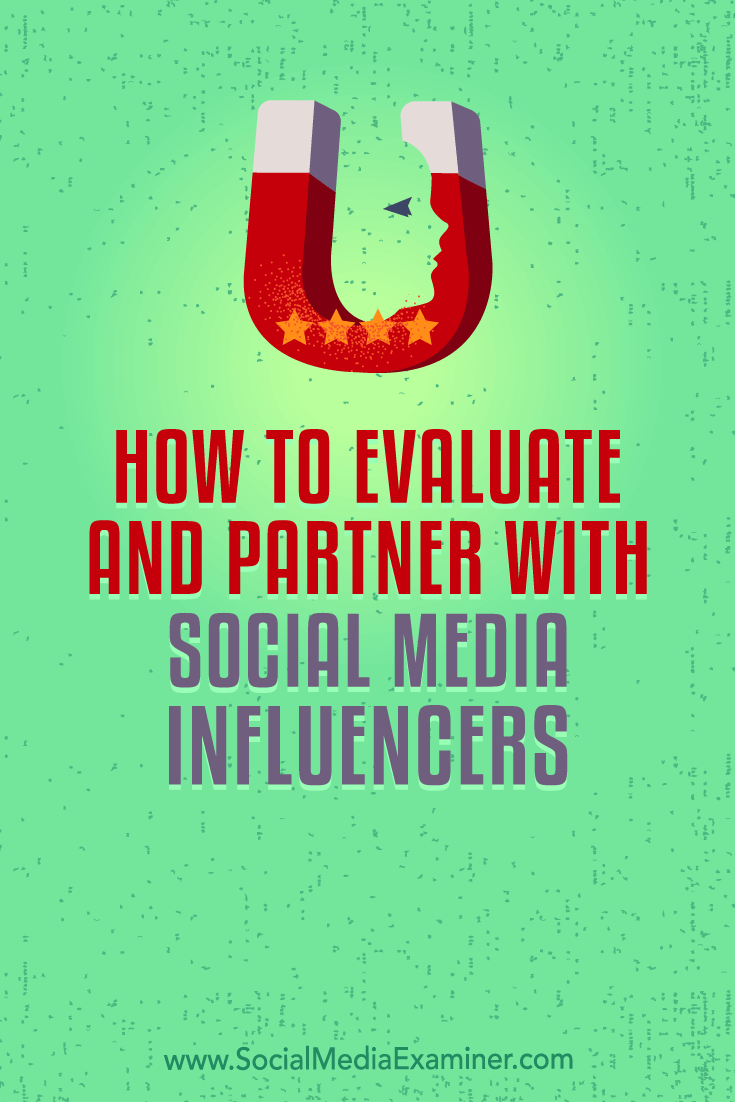 Social Media via Social Media Examiner https://ift.tt/1LtH18p July 31, 2018 at 05:05AM How to Choose the Right Social Media Platform for Your Business https://ift.tt/2M1RJs1 It’s been drilled into your head that every business should be on social media. But should you be on every platform? Not necessarily. Some social networks will be more effective for your business than others. Here’s how to choose the right social media platform for your business. Know Your CustomerKnowing your customer is crucial when choosing a social network. If you don’t have the time and/or resources to be active on all social networks, then you need to know which ones your customers use. If most of your customers are on Facebook, it makes no sense to focus on your Instagram or Twitter account. Know Your BusinessWhat type of business do you run? If you’re in the retail sector, you can probably benefit greatly from being active on Instagram, Pinterest, Facebook and other visual-based social platforms. This industrial home furniture company has active accounts on all of the big social networks, but it’s a little more active on Instagram and Pinterest. Why? Because these visual-based platforms allow potential customers to see their products and what they could look like in a home. If you’re in the services industry, you may benefit more from using Twitter, Facebook and Google+. These social networks are more text-based and make it easier to share useful information that may be valuable to potential customers. Know the Benefits of Each Social NetworkEach social network has its strengths and weaknesses. Along with knowing your customer and your business, you should also understand the benefits of each social platform. If your business is fast-paced and ever-changing, Twitter will allow you to post breaking news, important messages, announcement and other up-to-date information. Twitter is also a great platform for posting textual content, like listicles, articles and quotes. Facebook is the largest social platform in the world, boasting more than 2 billion active monthly users. About 61% of users are Americans between the ages of 25 and 54. Facebook works well for:
Just about anything can be posted on Facebook, from images to videos and textual content. A highly underrated platform, Pinterest is a visual-based social network with more than 100 million active monthly users. If you sell any type of product, Pinterest is a social network you need to be on. Promoted pins allow you to target specific types of users and link directly to your shop or product pages. According to Shopify, 90% of users plan their purchases using Pinterest. Like Pinterest, Instagram is a graphics-heavy social network. But here’s where it differs from its pin-based counterpart: Instagram has a younger audience. If you’re in retail, beauty, food or art, this platform will work very well for your business. YouTubeOffering video-based content, YouTube is ideal for businesses that can offer DIY videos, tutorials and educational information, such as:
Finding the right social platform for your business is crucial, and it may be a matter of trial and error before you find the most effective network. Use these tips to avoid wasting time on social networks that won’t be as effective. The post How to Choose the Right Social Media Platform for Your Business appeared first on Social Media Explorer. Social Media via Social Media Explorer https://ift.tt/2onGYog July 30, 2018 at 05:52PM Social Media Branding: 3 Tips to Learn From the Biggest Companies in the World https://ift.tt/2LF85L4  Social Media Branding: 3 Tips to Learn From the Biggest Companies in the World If you’re a small business, you might be confused about branding your social media profiles or building up your own personal brand. There is a lot of debate as to which branding method should be followed. Social media has several uses aside from brand building: support, selling and marketing to name a few. When trying to brand your social media profiles, it’s important to: 1. Include Visual Branding in Your StrategyVisual branding is important in an age where attention spans are shrinking. Followers shouldn’t have to scour your page to figure out who you are. Coca-Cola has its logo on all of its social media accounts. It’s easy to know what account you’re on when you see and recognize the logo in seconds. Twitter, Instagram and Facebook all have the company’s logo front and center. Small businesses that want to brand themselves will want to copy this visual strategy. FluksAqua, a group of wastewater professionals, does this very well. And a logo will also benefit from increased exposure. The more people see your brand, profile pages and logo, the better. It takes a fair amount of exposure for potential customers to remember a brand. 2. Create a Voice and Make Sure It’s HeardBrands need to have a voice. What is a voice? It’s the way that your brand communicates with the world. A brand’s voice can be formed by looking at your company’s: You need to exhibit the culture of your company while also catering to the audience that you’re trying to reach. But keep in mind that followers put a lot of stock in a brand’s authenticity. You need to be honest and true to your brand. The voice you maintain must also be honest. A brand that isn’t honest will risk causing more harm than good if its social media strategy backfires. But that doesn’t mean all of your posts need to be the same. You can have a funny, trendy, friendly, helpful or honest post – it doesn’t matter. Consistency is all that really matters. Speaking of consistency, your voice also needs to be heard, and this is best done when posting regularly. There are a lot of options available that will provide analytics, audience insights and scheduled posting options. Buffer, SproutSocial or HootSuite – among many others. 3. Utilize Profile Space ProperlyA lot of brands, especially smaller brands, are not using their profile space wisely. You need to utilize this bio / profile space properly. This is the space that you want to use in an effort to tell your audience who you are and what you do. Well-known brands may be able to get away with a skimpy profile; your brand cannot. Use this small space, often just a paragraph, to explain what your company does or its purpose in the most succinct way possible. When followers go to your page, they should be able to read this section and come away knowing exactly what you can offer them if they choose to follow your social media profile. Completely fill out your profile – it’s always worth the effort to be thorough. Social Media via Social Media Explorer https://ift.tt/2onGYog July 30, 2018 at 05:45PM 5 Types of Content that Social Media Users Love https://ift.tt/2vhDt7F  5 Types of Content that Social Media Users Love One of the biggest challenges businesses face on social media is finding content their audience loves. Audience engagement is a critical component to success, but in a world of information overload, it can be hard to catch and hold your followers’ attention. Instead of relying on trial and error to find success, try focusing on these five content types – which audiences love. 1. ListsPeople still love lists. Why? Because they’re easily digestible. In a world where we barely have time to breathe, lists compact information into a simple, easy-to-scan post. Users can read through the entire article, or they can take the information they need and leave. Either way, you’re not wasting the user’s time with a list post. They don’t have to skim through walls of text to find the information they want. As long as people are short on time and attention spans, list posts will always be popular with social media users. 2. InfographicsPeople love statistics, and they love visual content. Infographics marry the two in an easy-to-digest format. According to ContentDesk, infographics are 30 times more likely to be read than a textual article. Infographics are also easy to share on social networks, like Twitter, Facebook and Pinterest. 3. Research and StudiesJust like statistics, people love research and studies. They serve as proof to back their claims or beliefs. Here’s an example of how effective research posts can be on social media. The company Flo, which offers a home EV charging station, shared a post on Facebook showing how much customers can save with an electric car compared to a gas car. That post had more engagement than others and quite a few shares. People love to share their opinions on studies and research, and they love to share this type of content with their followers. 4. Stories about Social CausesIt’s great to share company news on your social accounts, but sharing stories about social causes, the backstory behind your brand and the things your staff does outside of the office humanizes your brand. Your audience wants to get to know the people behind your brand. These types of posts are one way to do that. 5. Responses to Industry NewsWhat’s happening in your industry? Your audience wants to know how you feel about these changes or breaking news events. Share your response to news events, and you’re sure to see your user engagement improve. People love to share their opinions; no doubt they will share their opinions about your opinion. It doesn’t necessarily need to be breaking news either. You can respond to reports, analyses and even updates from industry leaders. Social media is a vast world with a lot of competition. Make your message count by sharing posts that your audience will love. Social media users love lists, infographics, research, social causes and responses to industry news. They’re more likely to share and comment on these engaging posts, and you’re more likely to grab their attention – a valuable commodity in the business world. Social Media via Social Media Explorer https://ift.tt/2onGYog July 30, 2018 at 05:39PM Social Media and SEO: Can Social Media Boost Your Rankings? https://ift.tt/2KamyJx Social media marketing is different than search engine optimization. The two can run completely on their own, providing a return on investment in the process. But, when combined, can social media help provide a boost to your rankings? Yes, but not like professionals once thought. Social media signals were mentioned as a ranking factor in 2010, but then something drastic happened: Twitter blocked Google’s access. The block, albeit temporary, is one of the things that led to the announcement that Google cannot rely on signals for their rankings that may not be existent tomorrow. Since then, Google has failed to state that social media signals are a part of their ranking algorithm. Yet, we’re seeing a lot of social media pages ranking in Google’s search results, so not having a social media presence can definitely be detrimental to your marketing strategy. Social media can be leveraged to increase rankings in other ways, too: 1. Social Media for Content MarketingContent marketing isn’t just a trend – it’s the backbone of SEO. Any top-tier SEO agency knows that content is vital to a website’s success. Social media can be used, often indirectly, to help increase search engine rankings by promoting content. You can promote your content over several social media channels. Social media makes it easy to get content in front of your audience. Even if social media links don’t provide a direct ranking boost, it puts your content into the hands of influencers that may choose to link out to your content. At the very least, social media will drive traffic to your website through content promotion. Distribute your best content on social media and then reach out to influencers, or tag them in the post to generate further buzz. 2. Brand Awareness Leads to Improved SEOSocial media is a great avenue for building brand awareness. When you’re working on a social media strategy, you’re building a brand that others will know and remember. Influencers and other content producers will start to recognize your brand. And when linking out to another website, it’s common to link to a site or company that you know. When your name is in front of your audience and the Internet, you’ll start to build your brand which will naturally start to produce links over time. The goal is to become an influencer in your niche and then work off of this to gain links. 3. Social Media Helps with Branded SearchesWhen branded searches are performed, a potential lead is searching for your brand directly. Seeing your competitor ranked second or third on the list may drive some potential leads to the competition. Social media profiles rank highly in social media, and branded terms are the ideal choice. If someone searches “Pepsi,” you’ll find the company’s social media accounts on the front page of the results. It’s a great way to occupy the first page of Google for branded searches. While the impact may seem minimal, all of the potential leads will be directed to a page or asset that you control and own. The post Social Media and SEO: Can Social Media Boost Your Rankings? appeared first on Social Media Explorer. Social Media via Social Media Explorer https://ift.tt/2onGYog July 30, 2018 at 05:25PM
https://ift.tt/2Ao6zYK
How to Provide Better Customer Service by Implementing Live Chat https://ift.tt/2LyaPdb It’s no secret that businesses need to prioritize the customer experience. Ultimately, keeping your customers happy will help your business grow and prosper. In fact, 80% of consumers say they’re willing to spend more money to have a better customer service experience. As a business owner, you need to recognize this and adjust your approach accordingly. Ask yourself if your current customer service strategy is more convenient for you or more convenient for your customers. Here’s what I mean. If the only way to contact a customer service representative at your company is via telephone during business hours on weekdays, that’s more convenient for you. But if a customer has the ability to reach you on weekends or after hours, this will provide them with an enhanced customer service experience. Improving your customer service may cost you more money. I understand this can be discouraging for some of you. But as discussed, customers are willing to spend more money for this experience. So you can increase your prices accordingly. Let’s take a look at the most important elements of the customer experience:
If you look through these responses, you’ll see a common theme across the board. Customers want fast response times. This is especially important if they have an issue, need, or complaint. But you also need to provide fast response times for general inquiries. Your customers want to speak with knowledgeable staff. They also want the option to reach customer service representatives, regardless of the time of day or their location. The contact method needs to be fast and easy to use. Implementing live chat addresses all these factors. For those of you who aren’t currently using live chat to connect with your customers, that needs to change. I’ll explain how live chat will improve your customers’ service experience and ultimately help you make more money. Here’s what you need to know. Customers prefer live chatNow that we’ve had a chance to look at the elements of good customer experience, it’s time to take those results one step further. By reviewing those responses, it’s logical to assume that live chat would meet the needs and requests of the consumer. But is that really what your customers are looking for? Absolutely. Research shows that live chat has a 92% consumer satisfaction rating. This is the highest rating compared to phone support, social media, and email. Furthermore, when asked directly, consumers cited live chat as their most preferred method of customer service communication:
Live chat is not a new advancement in technology. It’s been around for decades. That said, we’re seeing an increase in its availability and popularity in customer service. According to experts, in the next 12 to 18 months, live chat for customer support is to grow by 87%. It’s in your best interest to implement this now, before your competitors beat you to it. With the popularity of live chat increasing, consumers will be more likely to favor brands offering this most preferred method of communication. Failure to jump on board with this trend now could result in you falling behind the competition and losing some customers. Make your live chat option easily accessibleLet’s say a customer decides they have a question, need help, or have an issue that needs to be addressed. Now what? They shouldn’t have to spend much time searching and scrolling through your website to find a representative. This is a navigation mistake that you need to avoid. The live chat feature needs to be readily available, or it won’t be as effective. The best way to do this is to provide a live chat pop-up in the corner of your page. Check out this example from Warby Parker:
Your live chat option should be easy to find, even when a website visitor isn’t initially looking to speak with a representative. Just knowing that this option is available will improve their experience. If they don’t want to use this feature right now, they can simply minimize the chat window and continue browsing. I really like this live chat feature from Warby Parker: it’s big, but not too intrusive. Website visitors can continue to navigate and use the site, even while the chat box is open. This makes it easy for customers to tell your live chat representatives exactly what they need if they have an inquiry that’s specific to something on your web pages. Provide fast response timesThink about the last time you contacted a business that didn’t have a live chat feature. How did you reach out to them? Chances are you used one of the following methods:
Several times, I’ve spent over an hour on the phone waiting to speak to a representative. We’ve all been in this situation before. You pace around the room listening to terrible hold music or some other automated loop of a voice saying “your call is important to us.” It’s frustrating, to say the least. Email communication isn’t much better. This could take days or potentially even longer. I sent an email to an airline a few months ago, and it took them three weeks to respond. But live chat gives you the opportunity to respond to customer inquiries as fast as possible. Here’s a look at the top reasons why customers say that live chat is their preferred method of contact:
As you can see, getting their questions answered immediately ranked first on this list. Just implementing live chat isn’t necessarily effective if it’s taking forever for your representatives to respond. So make sure you properly staff your agents to handle the volume of customer messages. Even if an agent isn’t ready to respond as soon as a new chat starts, there are still ways to keep the customer happy. You can use automation to your advantage. Set up instant responses using artificial intelligence software asking the customer what they need help with. Based on the customer’s answer, you can connect them with the next available and knowledgeable staff member, but we’ll discuss that in greater detail shortly. You can even gather more information about the customer once the chat is initiated and before an actual person starts responding. Ask for details such as:
This buys you some time, but it also gives your chat agents more information to further assist the customer as fast as possible. Include typing indicatorsOnce the chat starts, you want to make it clear to your customers that someone is there to respond. When they ask a question, it may take your agents some time to read through it and research a solution. Plus, not all of your customers will be sending perfect messages. There could be some spelling and grammar mistakes. They also don’t know your products and services as well as you do, so they may not even know how to ask the question properly at first. It could take your agents a minute to decipher the question and understand what the customer needs help with. But with all of this in mind, it’s important to let the customer know that an agent is present. The best way to do this is with a typing indicator. This shows the customer their question is not being ignored, even though they haven’t seen a response yet. Train your staff to acknowledge all messages from the customer, even before they provide a response. For example, let’s say someone asks a question, but the agent needs a minute or two to research and type the resolution. Rather than having a minute or two of downtime, the agent can respond with something like, “Yes I see what you’re talking about.” Then the customer will see the typing indicator as well while the agent continues writing the solution. Now the customer knows their question isn’t being ignored and doesn’t think there is a glitch or problem with the live chat platform. Connect customers with knowledgeable support agentsWhen a customer has a question or problem, it’s important it gets answered not only fast but also efficiently. If you can’t come up with a solution for your customers, you aren’t providing them with the best possible customer service. It’s important to connect your customers with support agents who are able to help them with their problems. So you need to gather more information about the inquiry before connecting the chat to an agent. Here’s a look at how Apple handles this:
Obviously, Apple is a major company with a wide range of products, software, and services. While overall their staff may be knowledgeable, they have experts for different departments. For example, if someone has a question about their Apple Music subscription, they will probably be connected with a different agent than someone who is having issues with their Macbook software. So if your business has lots of departments, you’ll want to have some type of filtering system like this as well. Don’t have your agents answer questions they are not qualified to answer. In the event that an agent doesn’t know how to provide help, there should be an option for them to transfer the chat to another representative. Let’s say you have retail store locations that sell various home improvement products, furnishings, and electronics. A customer starts a live chat, indicating they need help with outdoor patio furniture, and then gets connected with a proper associate. Once their question is answered, they may have another question about installing a sound system in their living room. So the agent could say they’ll transfer the chat to someone who specializes in electronics. Send your customers a chat transcriptOnce the chat is over, your customers may want to refer back to the conversation. This is especially true if they were troubleshooting a problem and the representative offered a step-by-step solution. The chat transcript also shows you’re being completely transparent. It keeps your staff accountable for what they say as well. It’s basically the same concept as phone calls being recorded for quality or training purposes. Sending the transcript to your customers proves you’re recording and monitoring the conversations. This may also reduce the chances of a customer reaching out for help again when they have the same question or forget something that was said. They can simply refer back to the chat. This is one of the reasons why live chat is more cost-effective than phone support.
Plus, with live chat, your agents will be able to speak with multiple customers at the same time. This can’t happen over the phone. But I’ll discuss this concept in more detail shortly. Either way, not only will you be improving your customer experience by implementing live chat, but you’ll also be saving money. This, in conjunction with the consumer willingness to spend more money for better service, is a formula for increased profits. Build an FAQ databaseIf you see common questions coming in via live chat, you can use this information to improve your website. Start an FAQ page. Write detailed responses to those questions. Customers may search or check this page before connecting with a live chat agent. If they see their question, they won’t even need to contact your customer support team. The database will also help you improve your products and services. For example, let’s say you’re selling a product that requires customer assembly, but you’re seeing a huge number of customers asking questions about the instructions. You may need to go back and re-evaluate those instructions. Make improvements in areas where customers had questions. This FAQ database will help both you and your customers. Train your staff properlyTo maximize the efficiency of your live chat, your agents will be dealing with several conversations simultaneously. Make sure they are able to handle this. Provide proper training so they can navigate between windows and stay organized. Even if they are knowledgeable about your brand and products, that’s useless if they don’t know how to properly use the live chat software. You don’t want them to feel overwhelmed, or it will hurt the quality of their responses and ultimately reflect poorly on the customer experience. Look at how customers respond after they have positive and negative experiences:
They share their feelings on multiple channels of both good and bad encounters. But they are more likely to tell people about bad customer service experiences. Make sure your staff are friendly. Train them to be both helpful and understanding. Customers may say things in a wrong way or use incorrect terminology. Don’t make them feel bad about it. Apologize for any inconvenience your product may have caused them. Thank them for reaching out and supporting the business. Stay engaged. Ask the right questions in response the customer inquiries. Even if the customer communicates using slang, shortcuts, or acronyms, your staff should always be responding with proper grammar to stay professional. ConclusionYour business needs to implement a live chat feature. Ultimately, this will improve your customer service. Customers prefer live chat over other methods of communication. They want their inquiries answered as fast as possible. Add a typing indication feature to show customers that an agent is there and working on a response. Make sure your staff is knowledgeable. If a support agent can’t answer a question, allow them to transfer the chat to an expert in that particular department. Send your customers a copy of the chat transcript so they can refer to it if they need any clarification. Use common concerns to build an FAQ database. Your support agents need to be able to accommodate multiple conversations simultaneously. Make sure they’re trained to be helpful and professional at all times. All of these factors will keep your customers happy and increase your profits. How is your brand using live chat to improve the customer service experience? Social Media via Quick Sprout https://ift.tt/UU7LJr July 30, 2018 at 10:08AM Twitter turns to academics to improve conversational health on the platform https://ift.tt/2M1ScdO Twitter is partnering with two groups of academic researchers to figure out how to measure the health of conversations happening on the platform. It’s all part of the company’s continuing long game for social relevance. Despite the fact that it lost 1 million users, the company also posted $100 million in profit during last week’s earnings. But neither of these numbers seem to change the fact that Twitter needs to make some adjustments to the way people use the social network. In March, Twitter called for proposals from researchers to see how they might approach the issue of analytics around the types and manner of conversations on Twitter. These proposals were thoroughly reviewed by Twitter employees from a variety of departments at the company, including Engineering, Product, Machine Learning, Data Science, Trust and Safety, Legal and Research. Twitter also says that the review committee was organized to include representatives from diverse groups across the company. (Reminder: less than 10 percent of Twitter employees are diverse, so it was likely a busy few months for those people.) Well, the review process is now over and Twitter has decided on two research teams, who will focus on two different issues. The first team, led by scholars from Leiden University, will look at how echo chambers form and their effect, as well as the difference between incivility and intolerance within Twitter conversations. The team — including Dr. Rebekah Tromble, Assistant Professor of Political Science at Leiden University, Dr. Michael Meffert at Leiden, Dr. Patricia Rossini and Dr. Jennifer Stromer-Galley at Syracuse University, Dr. Nava Tintarev at Delft University of Technology, and Dr. Dirk Hovy at Bocconi University — has found in past research that echo chambers can cause hostility and promote resentment towards those not having the same conversation. The first set of metrics this team is focusing on will look at the extent to which people acknowledge and engage with diverse viewpoints on Twitter. The second set of metrics will look at the difference between incivility and intolerance. Past research by this group shows that incivility can serve important functions in political dialogue, though not without spurring its own problems. On the other hand, intolerant speech (hate speech, racism, xenophobia) threatens our democracy. The team plans to develop algorithms that will distinguish between more useful incivility and the very useless intolerance we encounter daily on Twitter. The second research project will be led by Professor Miles Hewstone and John Gallacher at The University of Oxford, in partnership with Dr. Marc Heerdink at the University of Amsterdam. The work will be an extension of Prof. Hewstone’s long standing work to study intergroup conflict. The current findings from this study show that when conversation contains more positive sentiments, cooperative emotions, and more complex thinking and reasoning from multiple perspectives, prejudice will go down and the quality of the relationships will go up. “As part of the project, text classifiers for language commonly associated with positive sentiment, cooperative emotionality, and integrative complexity will be adapted to the structure of communication on Twitter,” the Twitter blog says. Just like any social network, Twitter provides scaffolding. Users, on the other hand, construct buildings made of dialogue. How exactly Twitter will be able to adjust the scaffolding to produce more useful, empathetic conversations is still a mystery. But bringing in the academic community to help is an excellent next step. Social Media via Twitter – TechCrunch https://techcrunch.com July 30, 2018 at 08:11AM How Small Businesses Can Generate More Engagement on Social Media https://ift.tt/2M3ttpM Social media is a key advertising channel for small businesses. Ads on Facebook are a cheap way to drive leads to a business’s offer, but there are also businesses growing their social media presence organically. These businesses are posting away, meeting the demands of potential customers and creating value. Businesses need to find ways to generate engagement, and this can be difficult for a small business that doesn’t have a staff member to dedicate as a social media manager. Social media is time consuming, so it’s important for small businesses to make sure that their efforts are worthwhile. How can small businesses generate more engagement? Speed is EssentialSpeed is the name of the game in social media. Responding to a breaking news event three days after it occurred would not generate the same level of engagement as responding in a mere 3 – 4 hours. If you want to keep your audience engaged and don’t think speed is a factor, consider this one statistic:
So, a lot of brands are responding too slowly to their users. Leverage your response time to ensure that your users are fully engaged. If you don’t mind being a little controversial, you may follow competitor accounts and respond to customer questions when they don’t reply. Let’s assume you asked a local plumber a question days ago that they never answered, but Courtesy Plumbing & Heating responded. You would likely use the company’s services or at least consider them as a result. Post Content That is Still RelevantWe’ve already touched on this slightly, but you need to post content that is still relevant. The goal is to post current content, and you can use hashtags to benefit from this even further. So, if it’s national pizza day and you’re a pizza place, post pictures, information and even group photos of your employees and/or customers. If you want to stay relevant, there are listening tools that can help you. Tools are your friend when staying relevant, so don’t be afraid to setup alerts and use listening tools to drive engagement – everyone else is doing it. Start Adding Images into Your PostsEveryone is trying to drill it in social media user’s heads that they need to start adding images into their posts. Why? Images are statistically shown to increase engagement. There’s no better or faster way to increase engagement than to add images to your posts. Buzzsumo conducted a study of their own and found that adding visuals into their posts increased engagement by 2.3x. Attractive images work best, but you’ll also want to use the text portion of a post to add value to your readers. Video is also a very powerful tool for engagement, so feel free to start uploading videos to YouTube and begin spreading them across your social media channels. And as a way to say “thank you” to your followers and fans, don’t be afraid to repost a post or post user-generated content. When running contests or promotions, user-generated content can be a very powerful way to gain followers and keep your current follower base engaged. The post How Small Businesses Can Generate More Engagement on Social Media appeared first on Social Media Explorer. Social Media via Social Media Explorer https://ift.tt/2onGYog July 30, 2018 at 07:01AM |
�
Amazing WeightLossCategories
All
Archives
November 2020
|


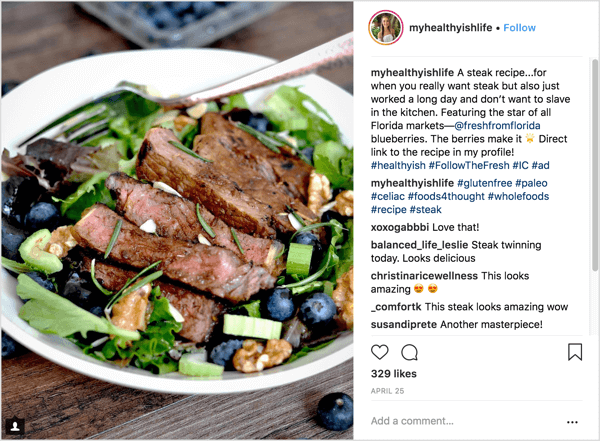
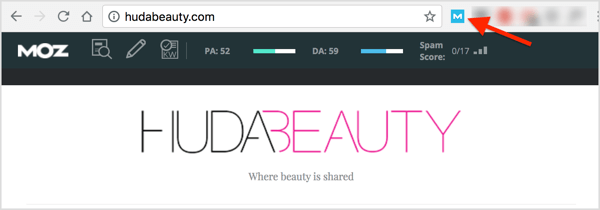
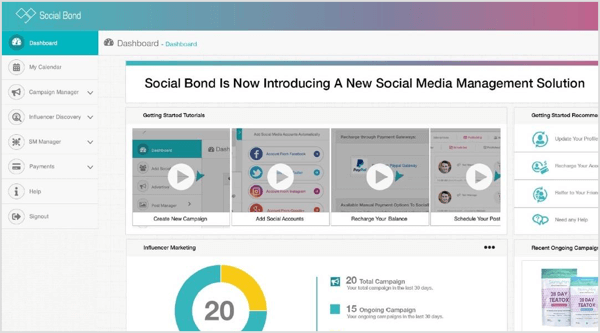
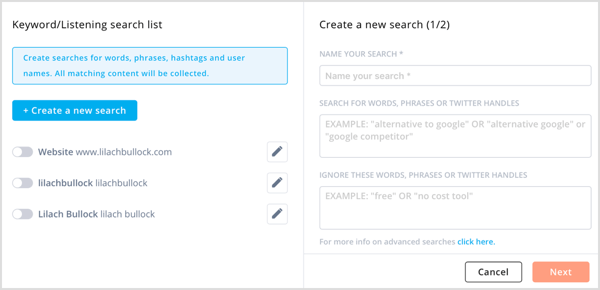
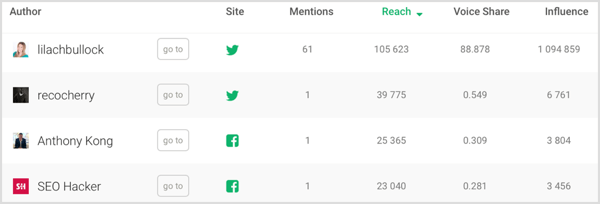
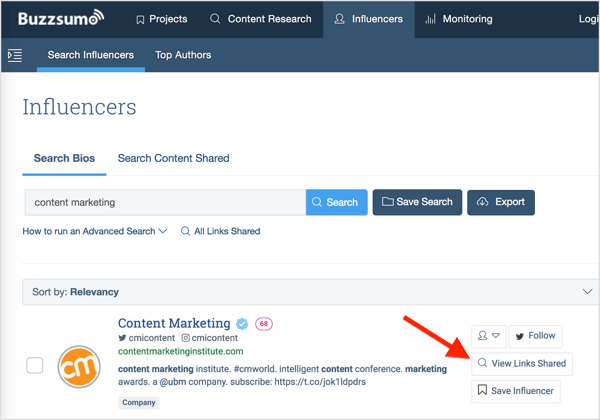
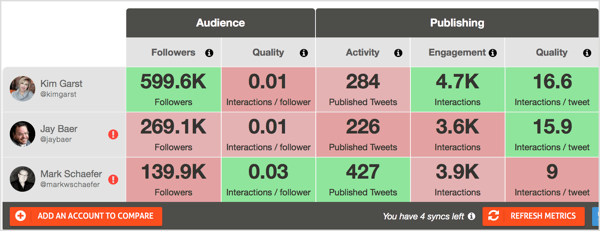
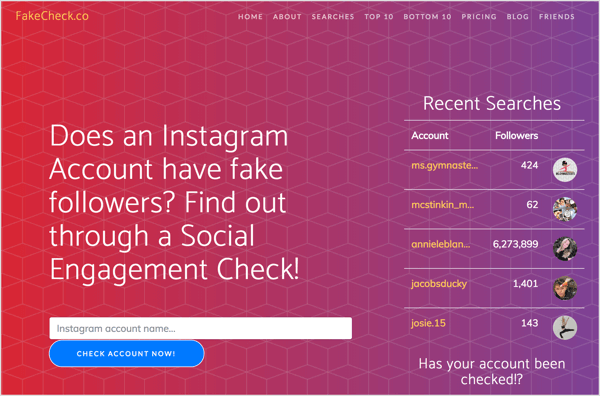
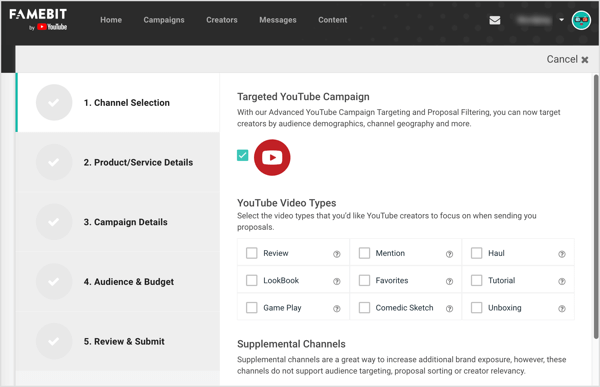

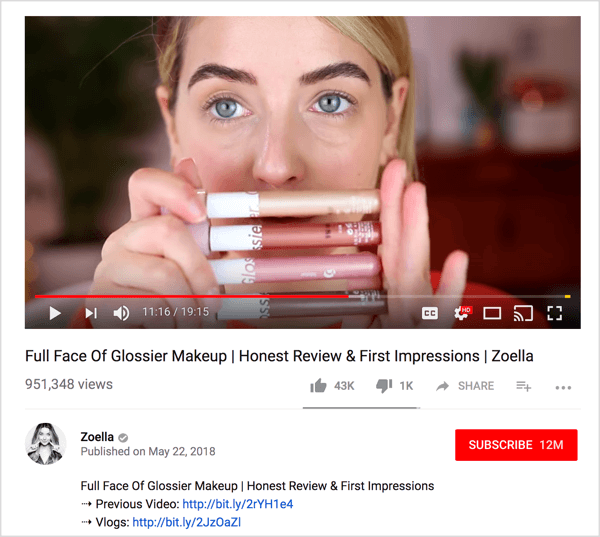










 RSS Feed
RSS Feed
